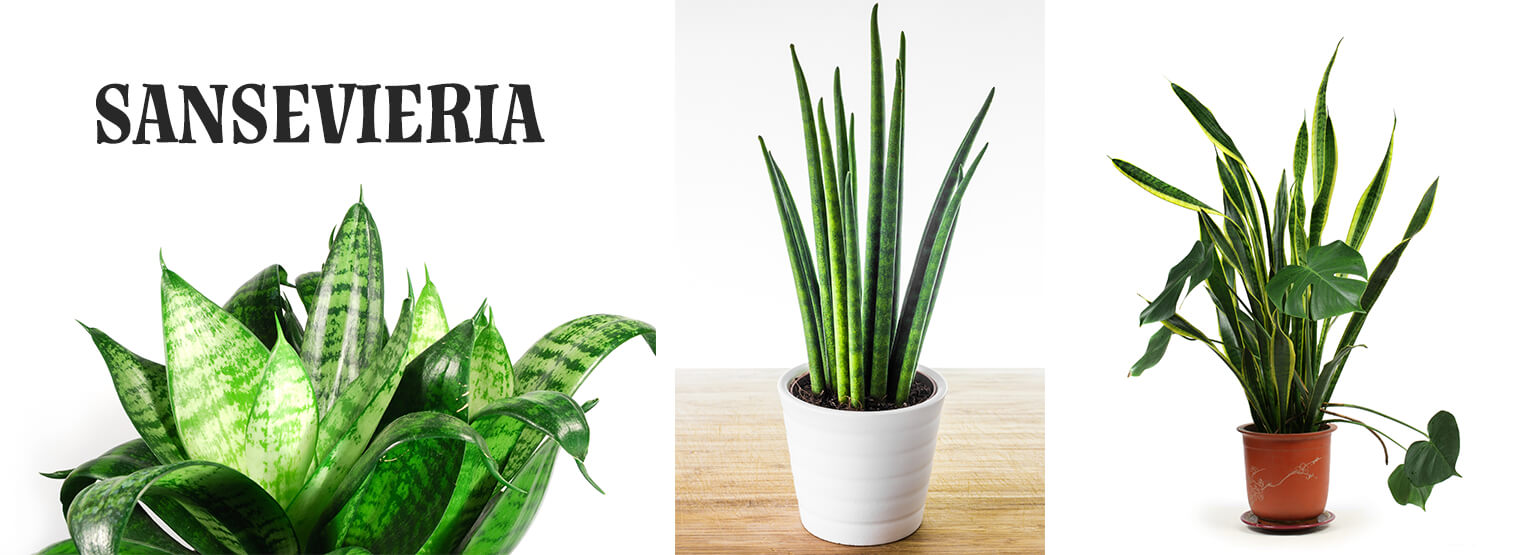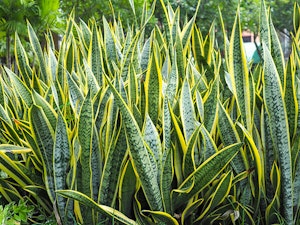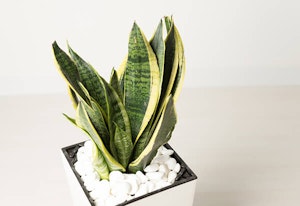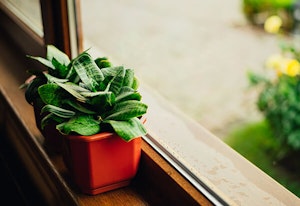 Be Inspired Blog - Arizona
Be Inspired Blog - Arizona

Creative Uses & Care of Snake Plants
Even if you love gardening, sometimes maintenance can slip through the cracks. Luckily, Snake Plants can give you the satisfaction of having beautiful foliage while being easy to care for and inviting some intrigue.
The Snake Plant’s History
The Snake Plant (Sansevieria) is a perennial with history. Swedish botanist Carl Peter Thunburg named this evergreen plant after Italian inventor, Raimondo di Sangro, Prince of San Severo (1710-1771). The snake plant has been in the US foliage trade since the 1920s but has been cultivated for more than 250 years.
Where Do These Plants Come From?
Originating from arid regions of Africa, Madagascar and southern Asia, the Snake Plant can often be found underneath the shade of a larger tree or shrub. Many Snake Plant species resemble an agave or yucca, which are also plants that hail from the same geographic areas.
In order to survive heat and drought, Snake Plants use the Crassulacean Acid Metabolism (CAM) process of photosynthesis. Plants that use CAM absorb carbon dioxide and release oxygen at night. In the day time, they close their stomata to save water and at night they open up and store CO2 in the form of an organic acid. The next day, the plants utilize the acid for their photosynthetic needs. This is the primary reason Snake Plants are so hardy and long lived. Some can even live for several decades in the right conditions.

Snake Plants can have very different appearances as they age. In Defense of Plants explains:
Regardless of their growth form, a majority of Sansevieria species undergo radical transformations as they age. Because of this, adults and juveniles can look markedly different from one another. A species that illustrates this nicely is S. Fischeri. When young, S. Fischeri consists of tight rosettes of thick, mottled leaves. For years these plants continue to grow like this, reaching surprisingly large sizes. Then the plants hit maturity. At that point, the plant switches from its rosette form to producing single leaves that protrude straight out of the ground and can reach heights of several feet! Because the rosettes eventually rot away, there is often no sign of the plants previous form.
Despite the many variations of the Snake Plant, one of the most popular forms is Sansevieria Trifasciata. They’re known for long, narrow, upward pointing sword shaped leaves. In their young rosetted form, Snake Plant species like the Sansevieria Subspicata and the Sansevieria Ballyi have foliage that is quite distinctive.
Snake Plants for Interior Designs

With more than 70 species around the world, you’ll have an amazing amount of variety to choose from when you use Snake Plants to accent modern and contemporary interior designs. They’re also popular commercially; if you keep an eye out, you’ll start noticing them in public places like restaurants, malls, sitting areas and elsewhere with their stiff skyward leaves banded with gray, silver or gold accents. They are also often seen paired with other succulents.
Your local SummerWinds Nursery carries a number of Sansevieria varieties that are available to add to your home’s décor, including:
- Sansevieria Bantels Senation
- Sansevieria Black Coral
- Sansevieria Black Gold
- Sansevieria Black Moon
- Sansevieria Cylindrica
- Sansevieria Fernwood
- Sansevieria Hahnii
- Sansevieria Hahnii Black Star
- Sansevieria Hahnii Blue Star
- Sansevieria Hahnii Gold Star
- Sansevieria Hahnii Jade
- Sansevieria Laurentii
- Sansevieria Masoniana Congo
- Sansevieria Parva
- Sansevieria Robusta
- Sansevieria Stuckyii
- Sansevieria Suffruticosa
- Sansevieria Superba Futura
- Sansevieria Trifasciata
- Sansevieria Zeylanica
Snake Plants Are Low Maintenance
If you’re a fan of flowers but don’t exactly have a green-thumb, consider looking after this easy to care for houseplant. Even if you’ve had limited success with other indoor plants, it’s not tough to be successful growing Snake Plants inside. The Sansevieria’s tolerance of shade, water efficiency and durability are the primary reasons it has garnered significant interest in the gardening community.
7 Things You Can Do With Snake Plants
According to Ambius, Snake Plants can be used for more than just a visual pop. Here are seven interesting ways you can use your plant for more than its good looks.
- Tackle sickness like coughs and inflammation of the respiratory tract by using the leaves and roots.
- The fibers of the Sansevieria plants can be used to produce bowstrings and ropes for baskets. Many African countries have been using this plant in this way for generations.
- You can use the durable leaves to make bandages for first aid kits.
- Koreans use the plants for businesses or events as a symbol of a strong relationship that can endure difficult times.

- If you’re looking into making your home a better place to sleep at night, consider purifying your air by placing Snake Plants in your bedroom. This plant is vouched for by a NASA study and is one of our top 8 plants to use to purify the air indoors. At night, it filters formaldehyde, trichloroethylene, xylene, toluene and benzene from the air. Consider placing 6 to 8 waist-high plants per person in your home for optimal oxygen quality. You can also place one in your bathroom to filter out formaldehyde, which is found in common cleaning products.
- Experts believe placing this plant in schools near children can reduce abrasive behavior.
- Use Sansevieria for feng shui in your office! It’s thought spiky plants like the Sansevieria have strong protective energies that may be good when setting up sensitive business deals in your work space and shielding yourself from negative chi may increase your luck. Place the plants in your office or home in the southeastern, southern and eastern corners.
Other Common Names
With such a low maintenance requirement you would think that the Snake Plant would have kind nicknames, but unfortunately that is not the case. It’s also known as Snake Tongue, Mother-in-law's Tongue and Devil’s Tongue, which are names thought to reflect the sharp qualities of the plant and the physical way its dense leaves stand and point up and away from the basal rosette.
How to Take Care of Snake Plants
As we’ve explained, Snake Plants are relatively low maintenance and easy for even a novice gardener. Here’s a simple guide to their care:

- Watering – Snake Plants are native to hot, dry environments and don’t need much watering. Avoid letting them sit in water to prevent root rot and fungus. Just leave enough water to moisten the soil around its base. Check the pot’s drainage holes to make sure they’re not blocked and remember to reduce your watering when the winter season arrives.
- Exposure – More light is best for the Snake Plant, however, they can handle growing in low light situations. If your plant is indoors, give it 6 to 8 hours of indirect light. Just beware their leaves could potentially burn if they are set in front of south facing windows. Try to provide protection for your plant by building shelter away from the hot afternoon sun. If needed, you could move the plant to a shadier location or you can place it near a shaded window. Even without direct sunlight the plant can still thrive, but with full sun outdoors, its colors should become more vivid and its blooms will increase.
- Humidity – Snake Plants love dry air, but they can also thrive in humid environments like the bathroom. Although houseplants may require misting, this low-maintenance plant doesn’t need it.
- Fertilizing – Fertilizing is not necessarily needed, but if you feel like you want to give your plant some extra care, we recommend mixing our E.B. Stone Organics Cactus Mix into the soil since they are dessert plants. Place your Snake Plant in a pot that drains well and leave about an inch of room at the top of the container to accommodate the growing roots and leaves. Re-pot your Snake Plant as it grows to prevent it from being root-bound.
- Pruning – No pruning is needed for this succulent! To start a new growth, called suckers, use the small new growths from the base and place them in fresh potting soil. Keep them slightly moist until their roots develop. In just 4 to 6 weeks you should see your new plant start to thrive!
- Repotting – You will only have to move your Snake Plant from its pot if the container wears down and starts cracking. Snake Plants can actually stay in the same pot for many years without adversity.
- Grooming – No grooming is needed but wiping the dust off your Snake Plant periodically is the best way to keep off buildup and ensure it absorbs the most sunlight.
- Safety Precautions – True to its name, this toxic beauty should be kept away from small children and pets. To incorporate a Snake Plant safely in your house, you could use a plant hanger to keep them out of reach. If you see signs of toxicity after ingestion by a child or pet, such as vomiting, salivating, nausea or diarrhea, call 911, the National Poison Control Center or seek a vet professional for pets.
Now that you know all about Snake Plants, you may be wondering why you haven’t added them to your house after walking past them countless times in public! If you would like some help to compliment your indoor décor, ask one of our Trusted Garden Advisors for advice on how to choose the right Snake Plant for your home today!

